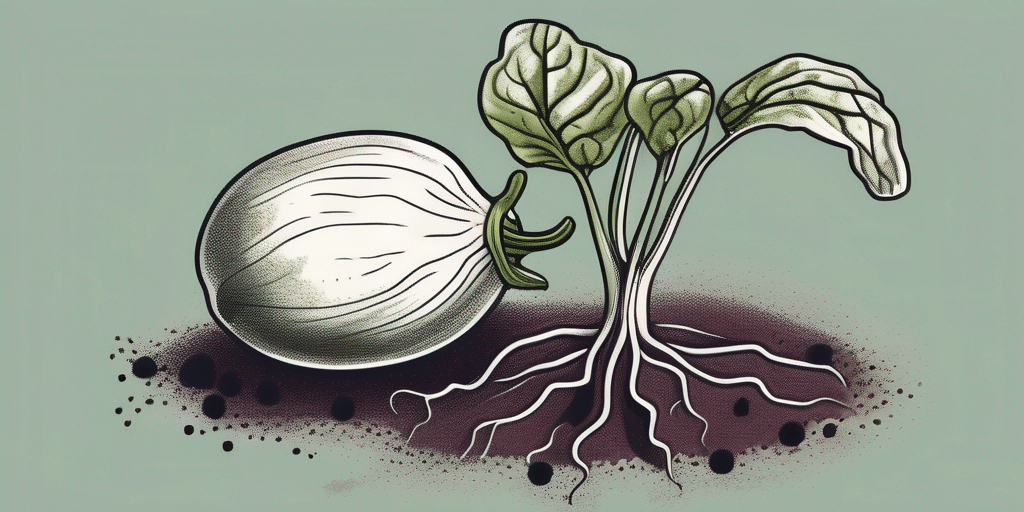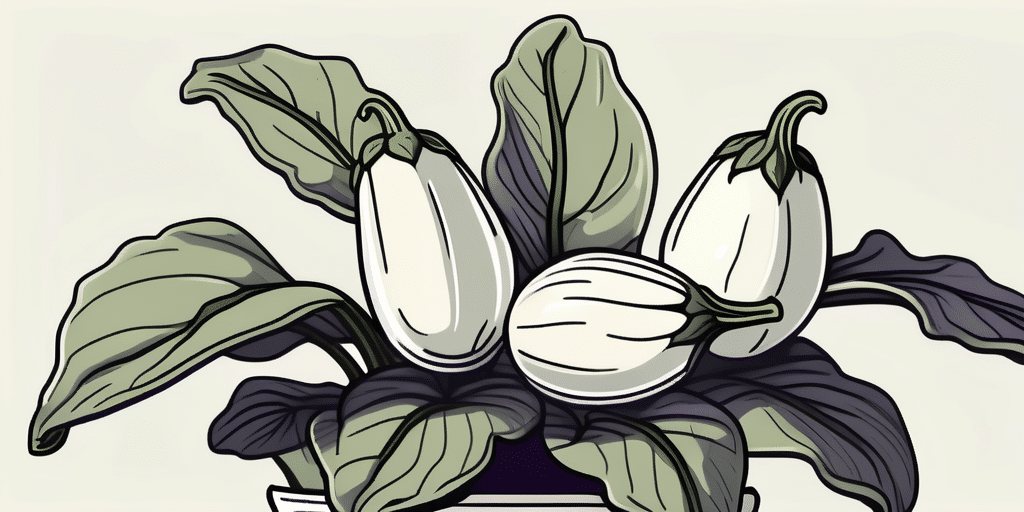California is known for its favorable climate for growing a wide variety of fruits and vegetables, including the Casper Eggplant. In this article, we will explore when to plant this beautiful and flavorful eggplant variety in California and provide tips on how to grow it successfully.
Climate & Hardiness Zones in California
Before we delve into the specifics of growing Casper Eggplant, let’s first understand the climate and hardiness zones in California. The state’s diverse geography and microclimates make it possible to grow different crops throughout the year.
California is divided into several hardiness zones, ranging from zone 5 in the cooler northern regions to zone 11 in the warm southern areas. It’s crucial to know your specific hardiness zone, as it determines the best times to plant and harvest crops in your area.
The coastal regions of California, such as San Francisco and Los Angeles, benefit from a Mediterranean climate characterized by mild, wet winters and hot, dry summers. This climate is ideal for growing a wide variety of crops, including citrus fruits, avocados, and grapes. In contrast, the Central Valley experiences hot, dry summers and cool, wet winters, making it perfect for cultivating crops like almonds, tomatoes, and cotton.
Moreover, California’s mountainous regions, such as the Sierra Nevada and the Cascade Range, have alpine climates with cold, snowy winters and mild summers. These areas are suitable for growing cold-hardy crops like apples, pears, and cherries.
When to Plant Casper Eggplant in California
When it comes to planting Casper Eggplant in California, timing is everything. The ideal planting time for this crop is typically in the late spring or early summer, once the soil has warmed up and there is no longer a risk of frost.
According to the University of California Cooperative Extension, the recommended planting dates for Casper Eggplant in different regions of California are as follows:
- North Coast: Late April to early May
- Central Coast: Late April to early May
- Central Valley: Late April to early May
- Sierra Nevada Foothills: Late April to early June
- South Coast: Late April to early May
- Deserts: Early March to early April
It’s important to note that these planting dates are general guidelines, and local climate conditions may vary. Always consult your local agricultural extension or trusted horticulture resources for more precise recommendations based on your specific location.
When selecting a location to plant your Casper Eggplant, keep in mind that this particular variety thrives in well-drained soil with a pH level between 6.0 and 6.8. It is also recommended to choose a spot that receives full sunlight for at least 6 to 8 hours a day to ensure optimal growth and fruit production.
Additionally, Casper Eggplant is known for its striking white fruit, which is not only visually appealing but also has a delicate, creamy texture and a mild, slightly sweet flavor. This variety is versatile in the kitchen and can be used in a wide range of dishes, from traditional Mediterranean recipes to modern fusion cuisine.
How to Grow Casper Eggplant in California
Now that you know when to plant Casper Eggplant, let’s explore how to grow it successfully. Follow these steps to ensure a bountiful harvest:
1. Choose a sunny location
Casper Eggplants thrive in full sun, so choose a location in your garden that receives at least 6-8 hours of direct sunlight each day.
2. Prepare the soil
Ensure your soil is well-draining and rich in organic matter. Before planting, amend the soil with compost or well-aged manure to improve fertility and drainage.
3. Start seeds indoors (optional)
If you want an early start, you can start Casper Eggplant seeds indoors 6-8 weeks before the last expected frost date. Sow the seeds in containers filled with seed starting mix, and keep them in a warm and bright location until they germinate.
4. Transplant seedlings
Once the threat of frost has passed and the seedlings are around 4-6 inches tall with several leaves, they are ready to be transplanted into the garden. Space the seedlings 18-24 inches apart and provide support if necessary.
5. Water and fertilize regularly
Keep the soil evenly moist but not waterlogged throughout the growing season. Regularly water the plants at the base to avoid wetting the foliage, which can lead to diseases. Fertilize the plants with a balanced organic fertilizer every 4-6 weeks to promote healthy growth.
6. Monitor for pests and diseases
Like many plants, Casper Eggplant can be susceptible to pests such as aphids, flea beetles, and tomato hornworms. Inspect the plants regularly and take action at the first sign of infestation. Organic pest control methods, such as handpicking or using insecticidal soap, are recommended.
7. Harvest when ripe
Casper Eggplants are ready for harvest when they reach their full size and develop a glossy, white color. Use a sharp knife or pruners to cut the eggplants from the plant, leaving a short stem attached. Avoid harvesting the fruits when they are overripe, as they may become bitter.
It’s worth noting that Casper Eggplant can be harvested at different stages of maturity. They are delicious when picked at a smaller size for a more tender and mild flavor, or they can be allowed to grow larger for a meatier texture.
Remember to handle the harvested fruits with care to prevent bruising and store them in a cool, dry place until you’re ready to enjoy them.
Now, let’s dive a little deeper into the fascinating world of Casper Eggplant. Did you know that Casper Eggplant, also known as “White Eggplant,” is a variety that is highly sought after for its unique appearance and delicate flavor? The name “Casper” comes from the ghostly white color of the fruit, which adds a touch of elegance to any dish.
Originating from Asia, Casper Eggplant has been cultivated for centuries and has found its way into the hearts and gardens of many Californian growers. Its versatility in the kitchen makes it a favorite among chefs and home cooks alike. Whether you’re grilling, roasting, or sautéing, Casper Eggplant’s creamy texture and mild taste make it a perfect addition to a variety of dishes.
Not only is Casper Eggplant a culinary delight, but it also offers several health benefits. It is low in calories and high in fiber, making it a great choice for those looking to maintain a healthy diet. Additionally, it is a good source of vitamins and minerals, including vitamin C, vitamin K, and potassium.
When it comes to growing Casper Eggplant, it’s important to note that it thrives in California’s Mediterranean climate. The warm and sunny weather provides the ideal conditions for this heat-loving plant to flourish. However, if you live in a cooler region, don’t worry! Starting the seeds indoors and transplanting them once the weather warms up can help you enjoy a successful harvest.
So, whether you’re a seasoned gardener or a beginner, growing Casper Eggplant in California can be a rewarding experience. With proper care and attention, you’ll soon be enjoying the fruits of your labor and savoring the unique flavors that this beautiful vegetable has to offer.
Frequently Asked Questions
Now, let’s address some frequently asked questions about growing Casper Eggplant in California:
Q: Can I grow Casper Eggplant in containers?
A: Absolutely! Casper Eggplant can be successfully grown in containers, provided the containers are large enough to accommodate the plant’s root system. Choose a well-draining potting mix and place the container in a sunny location.
Q: How long does it take for Casper Eggplant to mature?
A: On average, Casper Eggplants take around 70-80 days from planting to harvest. However, this can vary depending on growing conditions, temperature, and the desired size at harvest.
Q: Can I save seeds from Casper Eggplant?
A: Yes, you can save seeds from Casper Eggplant if you want to grow it again in the future. Simply allow a fully ripe eggplant to become overripe and develop a yellow color. Cut the fruit open and collect the seeds. Dry them thoroughly before storing them in a cool, dry place.
Q: Are there any common diseases that affect Casper Eggplant?
A: Casper Eggplant can be susceptible to diseases such as Verticillium wilt, powdery mildew, and bacterial spot. Proper sanitation, crop rotation, and providing adequate air circulation can minimize the risk of disease.
Now that you have a good understanding of when to plant and how to grow Casper Eggplant in California, it’s time to get your hands dirty and enjoy the fruits of your labor. Happy gardening!
Join the How to Grow Everything Community
Ready to transform your green thumb into a bounty of eggplants? Subscribe for free to How to Grow Everything and learn how to build the garden of your dreams! Receive personalized gardening advice tailored to your California grow zone, experience level, and interests. With our family’s promise of no spam, just the best gardening tips and exclusive deals delivered straight to your inbox, you’ll be well on your way to a flourishing garden. Join thousands of others and get started on your gardening adventure today—100% free!





